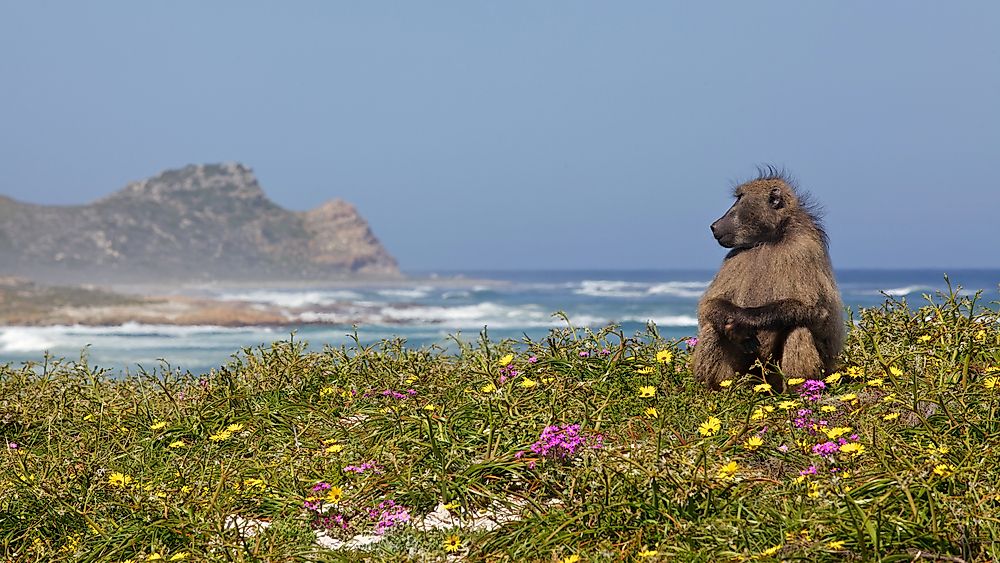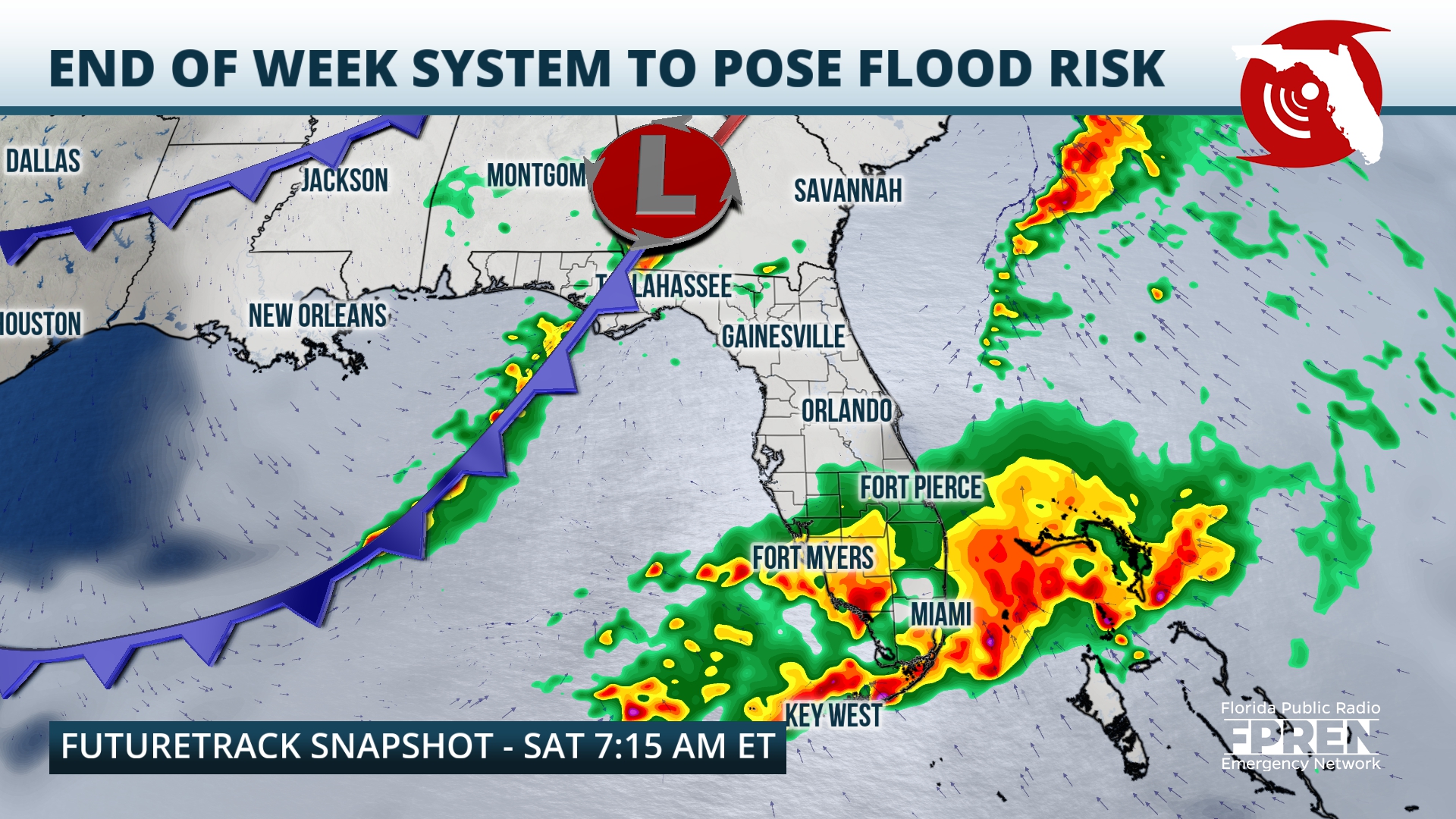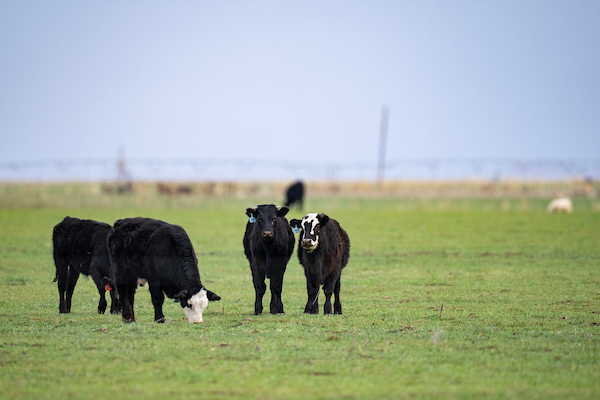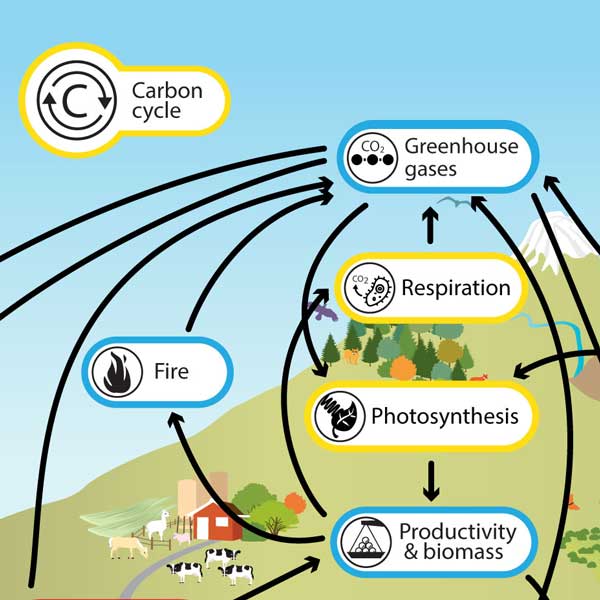Report on the Biodiversity and Sustainable Development Challenges of the Amazon Continental Shelf
Executive Summary
This report provides a comprehensive biodiversity inventory for the Amazon Continental Shelf (ACS), a critical and understudied marine biome. The study, leveraging data from continuous monitoring and systematic database reviews, identifies 3,286 species, representing a significant increase of 1,247 species from previous records. The findings highlight the region’s immense biological richness, which is fundamental to achieving Sustainable Development Goal 14 (Life Below Water). However, the report also identifies significant threats that jeopardize this goal. Key findings indicate that 67 species are threatened with extinction in Brazil, primarily due to pressures from commercial fishing, which directly challenges SDG Target 14.4 (End overfishing). Furthermore, identified biodiversity hotspots overlap with proposed offshore oil exploration blocks, posing a direct conflict with SDG Target 14.2 (Protect marine and coastal ecosystems) and global climate commitments under SDG 13 (Climate Action). This report underscores the urgent need for integrated, ecosystem-based management and robust policy-making informed by scientific data to ensure the conservation and sustainable use of the ACS, aligning with the 2030 Agenda for Sustainable Development.
Introduction: The Amazon Continental Shelf and the 2030 Agenda
The Amazon Continental Shelf (ACS) is a globally significant ecosystem, heavily influenced by the Amazon River’s discharge. Its vast biodiversity and the ecosystem services it provides are vital for both regional stability and global environmental health. Despite its importance, a comprehensive understanding of its biodiversity has been lacking, hindering efforts to implement effective conservation and management strategies. This knowledge gap poses a significant barrier to achieving the targets set forth in the Sustainable Development Goals, particularly SDG 14 (Life Below Water). This report aims to address this gap by providing a detailed biodiversity inventory, which serves as a critical baseline for assessing human impacts and guiding actions toward the sustainable management of this unique marine environment.
Methodology: A Data-Driven Approach for Sustainable Management
To build a comprehensive biodiversity inventory, this study employed a dual-pronged approach, directly contributing to SDG Target 14.a (Increase scientific knowledge, develop research capacity and transfer marine technology).
- Fishery Impact Monitoring: Data was collected through the CEPNOR/ICMBio Fishery Impact Monitoring Program between 1998 and 2024. Scientific observers on commercial fishing vessels recorded species occurrence and georeferenced catch locations, providing invaluable insight into the biodiversity impacted by fishing activities.
- Systematic Data Review: A thorough review of validated data from online repositories and reference collections was conducted. This included searching major databases such as the Global Biodiversity Information Facility (GBIF) and the Ocean Biodiversity Information System (OBIS) to consolidate existing knowledge.
The compiled data on species richness and the distribution of threatened species were analyzed to identify biodiversity hotspots. This spatial analysis is crucial for informing policies related to SDG Target 14.5 (Conserve at least 10 per cent of coastal and marine areas).
Key Findings: An Updated Biodiversity Inventory for SDG 14
Species Richness and Conservation Status
The analysis revealed a total of 3,286 species, a substantial increase over previous inventories. This underscores the region’s status as a major reservoir of marine biodiversity. The most diverse taxonomic groups identified were:
- Bony fish (28%)
- Microorganisms (15%)
- Molluscs (14%)
The monitoring program by CEPNOR/ICMBio was instrumental, adding 1,247 species to the existing records, demonstrating the value of continuous, government-led scientific initiatives for conservation.
Threatened Species and Implications for SDG 14.4
The report identifies a significant number of species facing extinction risk, a critical concern for meeting conservation targets.
- According to the Brazilian Environment Ministry (MMA), 67 species in the ACS are threatened.
- The groups with the highest number of threatened species are cartilaginous fish (40%) and bony fish (31%).
- Many highly endangered species, such as the Goliath grouper (Epinephelus itajara) and the Hawksbill sea turtle (Eretmochelys imbricata), are impacted by multiple commercial fisheries simultaneously.
This situation highlights the intense pressure on marine life from human activities and the urgent need to implement effective regulations to achieve SDG Target 14.4 (Regulate harvesting and end overfishing, illegal, unreported and unregulated fishing and destructive fishing practices).
Identification of Biodiversity Hotspots
Spatial analysis revealed distinct biodiversity hotspots, particularly off the coasts of Amapá and Pará states. Crucially, these areas of high species concentration, including threatened species, show significant overlap with:
- Major commercial fishing grounds.
- Offshore oil exploration concession blocks (SFZA-AP1, SFZA-AP2, and SFZA-AP4).
This overlap creates a direct conflict between economic activities and conservation imperatives, requiring careful spatial planning and robust environmental regulation to protect these vital areas, in line with SDG 14.2 and SDG 14.5.
Analysis of Threats to Sustainable Development in the ACS
Overfishing: A Challenge to SDG 14 and SDG 8
Intensive fishing is the primary stressor on the ACS ecosystem. The industry provides over 3,500 jobs and generates significant economic value, creating a complex socio-economic challenge that pits SDG 8 (Decent Work and Economic Growth) against SDG 14 (Life Below Water). The high number of threatened species caught as bycatch demonstrates that current management practices are insufficient to ensure the long-term sustainability of both the fisheries and the marine ecosystem.
Fossil Fuel Exploration: A Conflict with SDG 14 and SDG 13
The potential for oil and gas exploration in biodiversity hotspots presents a severe threat. Such activities risk environmental degradation through sound pollution, habitat destruction, and potential oil spills. Furthermore, the exploitation of new fossil fuel reserves directly contradicts Brazil’s commitments to reduce greenhouse gas emissions under the Paris Agreement and undermines global efforts to achieve SDG 13 (Climate Action).
Interconnected Challenges: Climate Change and Data Gaps
The health of the ACS is also threatened by climate change and deforestation in the Amazon basin (SDG 15, Life on Land), which alters freshwater discharge and nutrient cycles. Compounding these threats is a historical trend of “scientific protectionism,” where data is not openly shared. This lack of collaboration hinders comprehensive understanding and effective policy-making, working against the principles of SDG 17 (Partnerships for the Goals).
Conclusions and Recommendations for Achieving the SDGs
This report confirms that the Amazon Continental Shelf is a region of extraordinary biodiversity facing an anthropogenic web of threats from overfishing and potential fossil fuel exploitation. The data presented provides a critical scientific foundation for policies aimed at achieving the Sustainable Development Goals.
Recommendations
To align the management of the ACS with the 2030 Agenda, the following actions are recommended:
- Strengthen Fisheries Management (SDG 14.4): Use the updated biodiversity data to revise and enforce fishing regulations, including measures to reduce bycatch of threatened species and protect critical habitats.
- Implement Marine Spatial Planning (SDG 14.5): Designate the identified biodiversity hotspots as Marine Protected Areas or implement other effective area-based conservation measures to restrict harmful activities.
- Re-evaluate Fossil Fuel Exploration (SDG 13 & 14): The high biodiversity and vulnerability of the ACS must be a central consideration in the environmental licensing process for oil and gas exploration. A precautionary approach is essential to avoid irreversible damage to marine ecosystems and to remain consistent with national and global climate goals.
- Invest in Continuous Monitoring (SDG 14.a): Maintain and expand long-term monitoring programs like that of CEPNOR/ICMBio to track changes in biodiversity and ecosystem health, ensuring that management decisions are based on the best available science.
- Promote Open Science and Collaboration (SDG 17): Foster a culture of data sharing among research institutions, government agencies, and the private sector to build a holistic understanding of the ACS and develop collaborative solutions for its sustainable future.
Analysis of Sustainable Development Goals in the Article
1. Which SDGs are addressed or connected to the issues highlighted in the article?
The article on the biodiversity of the Amazon Continental Shelf (ACS) addresses several Sustainable Development Goals (SDGs) by highlighting the complex interplay between environmental conservation, economic activities, and scientific research. The primary SDGs connected to the issues are:
- SDG 14: Life Below Water: This is the most central SDG, as the entire article focuses on the marine biodiversity of the ACS, the threats it faces from human activities like overfishing and potential oil exploration, and the urgent need for conservation and sustainable management of marine ecosystems.
- SDG 15: Life on Land: The article connects terrestrial and marine ecosystems by mentioning that “ongoing deforestation in the Amazon region is also related to climate change, and has modified significantly the local hydrological regime,” which in turn affects the marine fauna influenced by the river’s discharge.
- SDG 13: Climate Action: The article links the issues in the ACS to climate change, noting that the “analysis of the impacts of ongoing climate change on the landscape of the Amazon region is still incipient.” It also points out that the exploitation of fossil fuels (oil) “contradicts the commitments made by Brazil…toward the reduction of greenhouse gases and the mediation of global warming.”
- SDG 8: Decent Work and Economic Growth: The article highlights the socio-economic dimension of the threats, stating that fisheries “provide more than 3500 jobs in the region…which generate more than US$82 million per annum.” This creates a conflict between economic dependence and the need for environmental conservation, touching upon the goal of decoupling economic growth from environmental degradation.
- SDG 12: Responsible Consumption and Production: The discussion on unsustainable fishing practices, including overfishing of species like the red snapper and the high volume of bycatch, directly relates to the need for sustainable production patterns in the fishing industry.
- SDG 17: Partnerships for the Goals: The study itself is a result of a partnership between the National Center for Research and Conservation of the Marine Biodiversity of Northern Brazil (CEPNOR/ICMBio) and the Goeldi Museum. The article also emphasizes the importance of data sharing and criticizes “scientific protectionism,” underlining the need for collaboration to achieve conservation goals.
2. What specific targets under those SDGs can be identified based on the article’s content?
Based on the article’s discussion of threats and conservation needs, several specific SDG targets can be identified:
-
Target 14.1: By 2025, prevent and significantly reduce marine pollution of all kinds.
- Explanation: The article raises significant concerns about the “potential impact of human activity,” specifically the “licensing of the exploitation of oil and gas fields.” It discusses the risk of environmental contamination from these activities, which directly aligns with the goal of preventing marine pollution.
-
Target 14.2: By 2020, sustainably manage and protect marine and coastal ecosystems to avoid significant adverse impacts.
- Explanation: The core message of the article is the need for “systematic ecosystem management combined with continuous monitoring, to mitigate these threats to the biodiversity of the ACS.” The identification of “hotspots of biodiversity” near fishing grounds and oilfields emphasizes the urgency of protecting these vulnerable ecosystems.
-
Target 14.4: By 2020, effectively regulate harvesting and end overfishing, illegal, unreported and unregulated fishing and destructive fishing practices.
- Explanation: The article explicitly discusses the impact of fisheries as the “principal stressor” for the ACS. It notes that species like the red snapper have become vulnerable due to intensive exploitation and that regulations “may simply not guarantee the capacity of stocks to recover from fishing pressure.”
-
Target 14.5: By 2020, conserve at least 10 per cent of coastal and marine areas.
- Explanation: The study’s effort to map biodiversity hotspots (Fig. 5 and 6) and the mention of “protected areas” in the region are directly related to identifying and justifying areas for conservation, which is the essence of this target.
-
Target 14.a: Increase scientific knowledge, develop research capacity and transfer marine technology.
- Explanation: The study is a clear example of this target in action, as it provides the “most comprehensive inventory of the marine biodiversity of the ACS compiled up to now,” adding 1247 species to the record. It also highlights knowledge gaps, as shown by rarefaction curves indicating that the recorded biodiversity is only a fraction of the estimated total.
-
Target 15.5: Take urgent and significant action to reduce the degradation of natural habitats, halt the loss of biodiversity and, by 2020, protect and prevent the extinction of threatened species.
- Explanation: The article provides a detailed account of threatened species, stating that “67 of which are threatened at some level according to the list of endangered species in Brazil.” It identifies threats from fisheries and oil exploration that contribute to habitat degradation and risk of extinction.
3. Are there any indicators mentioned or implied in the article that can be used to measure progress towards the identified targets?
Yes, the article mentions several quantitative and qualitative indicators that can be used to measure progress towards the identified targets:
- Indicator for Target 15.5 (Red List Index): The article directly uses the Red List as an indicator. It quantifies the conservation status of species, stating, “67 of them have a threat status classified as EN, VU or CR according to the list of threatened species of Brazil.” Table 1 provides a detailed breakdown of species by conservation status (CR, EN, VU, etc.) according to both IUCN and MMA lists.
- Indicator for Target 14.5 (Coverage of protected areas): The article implies this indicator by mapping “hotspots of biodiversity” (Fig. 5C) and “threatened species” (Fig. 5D) that overlap with areas proposed for oil exploration. These maps serve as a tool to argue for the protection and conservation management of these specific marine areas.
- Indicator for Target 14.4 (Proportion of fish stocks within biologically sustainable levels): The article provides data points that serve as proxies for this indicator. It mentions the total annual fishery production (“129,981.5 tons”) and notes that this is likely an “underestimate.” Furthermore, it highlights that key commercial species like the red snapper (Lutjanus purpureus) are now classified as “vulnerable,” indicating that their stocks are not being fished sustainably.
- Indicator for Target 14.2 (Proportion of national exclusive economic zones managed using ecosystem-based approaches): The study’s methodology, which divides the ACS into three “megahabitats” (AIP, ATR, ARA) for analysis, and its call for “systematic ecosystem management,” are foundational steps toward implementing an ecosystem-based approach. The data and maps provided are essential for such management.
- Indicator for Target 14.a (Proportion of total research budget allocated to research in the field of marine technology): While not giving budget figures, the article demonstrates the value of research investment through the CEPNOR/ICMBio monitoring program, which “added 1247 more species occurring in the ACS (39%) of the total data compiled in this study.” The rarefaction curves (Fig. 7c) also serve as an indicator of knowledge gaps, showing that recorded richness is as low as “37.22% in the AIP” of the estimated total, justifying the need for more research.
4. Table of SDGs, Targets, and Indicators
| SDGs | Targets | Indicators Identified in the Article |
|---|---|---|
| SDG 14: Life Below Water | 14.2: Sustainably manage and protect marine and coastal ecosystems. | Mapping of biodiversity hotspots and their proximity to human threats like oilfields and fishing grounds (Figs. 5 & 6). Call for “systematic ecosystem management.” |
| SDG 14: Life Below Water | 14.4: End overfishing and destructive fishing practices. | Data on annual fishery production (129,981.5 tons). Conservation status of commercially targeted species (e.g., red snapper is “vulnerable”). Analysis of bycatch and species impacted by multiple fisheries (Fig. 4). |
| SDG 14: Life Below Water | 14.5: Conserve coastal and marine areas. | Identification of specific areas needing protection, including the Amazon Reef System and biodiversity hotspots near oil exploration blocks (e.g., SFZA-AP1, FZA-M-539). |
| SDG 14: Life Below Water | 14.a: Increase scientific knowledge and research capacity. | Total number of species inventoried (3286). Number of new species added by the monitoring program (1247). Rarefaction curves showing knowledge gaps (e.g., only 37.22% of estimated species in AIP are known). |
| SDG 15: Life on Land | 15.5: Protect threatened species and halt biodiversity loss. | Use of the Red List Index: Number of threatened species identified (67 on Brazil’s MMA list, 77 on IUCN list). Breakdown of species by threat level (CR, EN, VU) in Table 1. |
| SDG 13: Climate Action | 13.2: Integrate climate change measures into policies. | The conflict highlighted between oil exploration policy and Brazil’s international commitments to reduce greenhouse gas emissions. |
| SDG 8: Decent Work and Economic Growth | 8.4: Decouple economic growth from environmental degradation. | Economic data on the fishing industry (provides over 3500 jobs, generates US$82 million in exports) contrasted with its environmental impact (overfishing, threatening biodiversity). |
Source: nature.com







